Broccoli is a cruciferous, nutrient-rich vegetable, a staple of many kitchen gardens. You can easily grow it in your garden with well-drained soil and ample sunlight and enjoy its benefits. To get the most out of your fiber and potassium-packed green vegetable, consider planting it along with complementing plants. The best companion plants for broccoli can help result in a better yield and flavor. Let’s explore some of the best companion plants for broccoli.
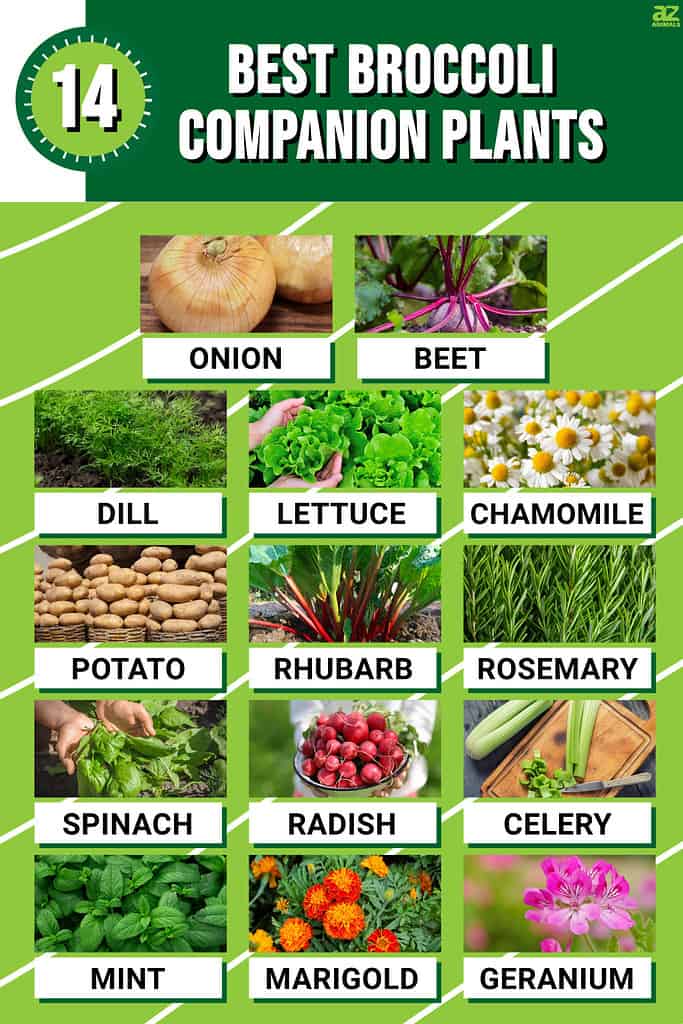
1. Onion

Enhance broccoli’s flavor by planting onions by your broccoli plant.
©RoJo Images/Shutterstock.com
Onions are a great option to plant near broccoli as their strong scent works as a natural pest repellent against common pests like aphids, cabbage worms, and slugs. As a plus, many claim that planting onions near broccoli can improve the flavor of the broccoli itself!
It is best to plant onions alternately with broccoli so that both plants get ample space to grow and yield maximum benefits.
2. Beet

One of the best companion plants for broccoli is beets.
©Denis Shitikoff/Shutterstock.com
Beets make excellent companion plants for broccoli as they do not have the same calcium needs as broccoli. Beets have low calcium needs, while broccoli slurps up the calcium like no other. In fact, beets may also add some magnesium to the soil.
Both vegetables are also cool-season crops and have similar growing conditions. Growing beets near broccoli can benefit the beets as well, as they appreciate some shade that the taller broccoli plants may be able to provide.
When planting beets near broccoli, pay special attention to adequate spacing to ensure proper growth of both plants. Aim for a distance of around 12 to 18 inches between individual plants to avoid hindering growth and overlapping.
3. Dill
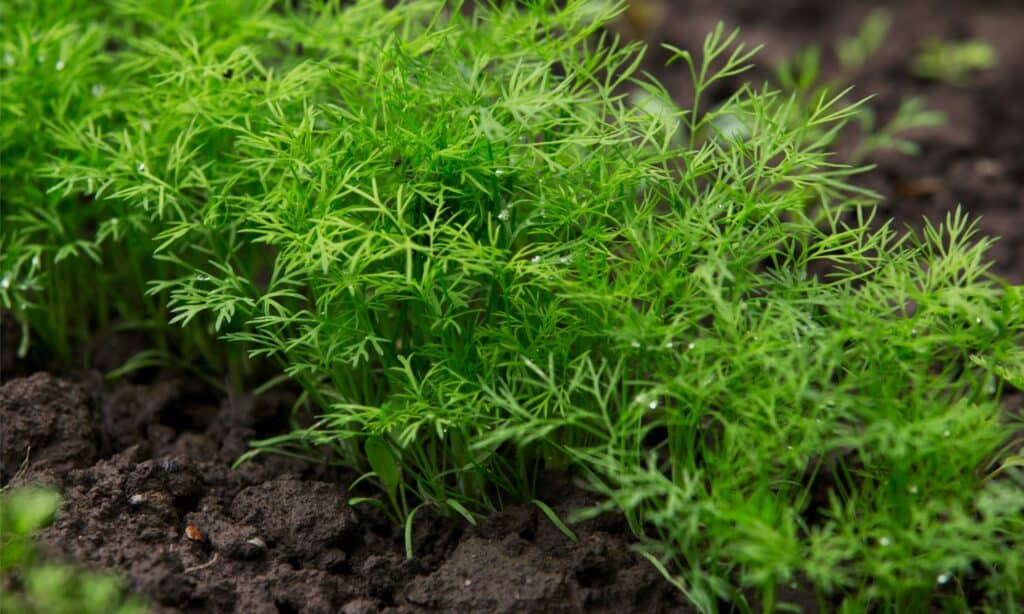
Dill can act as a natural pest repellent.
©iStock.com/DevidDO
One of the most attractive herbs for pollinators is dill. You can lure pollinator insects like butterflies, hoverflies, and bees to help pollinate your broccoli plants by planting dill.
The pungent smell of dill also acts as a natural repellent. Dill attracts beneficial insects that prey on these pests. Ladybugs, lacewings, and predatory wasps are just a few examples of beneficial insects attracted to dill flowers. These beneficial insects are natural predators of pests like aphids, caterpillars, and mites, providing a natural form of pest control for your broccoli plants.
The tall broccoli sprouts also offer shade to dill as a good companion plant, so planting these two plants together can benefit both!
4. Lettuce
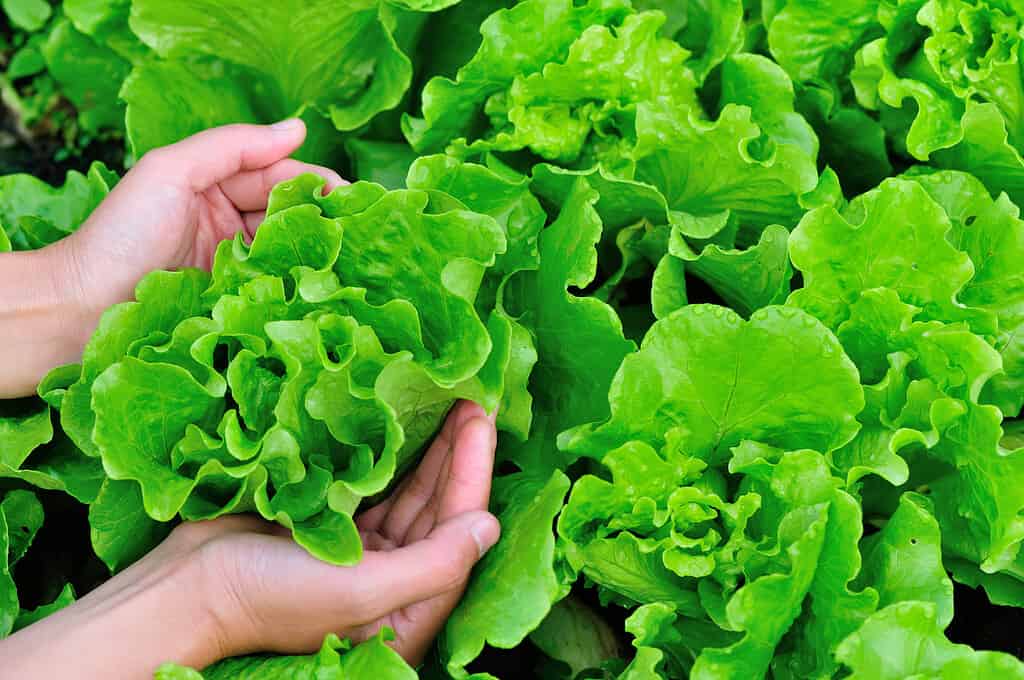
Lettuce and broccoli can benefit each other.
©lzf/Shutterstock.com
Another cool-weather vegetable, lettuce is one of the best companion plants for broccoli. By planting your lettuce under the broccoli, you can help make your lettuce last longer, as they enjoy the cool shade provided by the broccoli. Leafy greens like lettuce also occupy a lot of ground space, so they can help cool the soil and prevent weeds from sprouting.
Furthermore, the water requirements for both plants are also the same so that they will thrive in the same soil and water conditions.
5. Chamomile
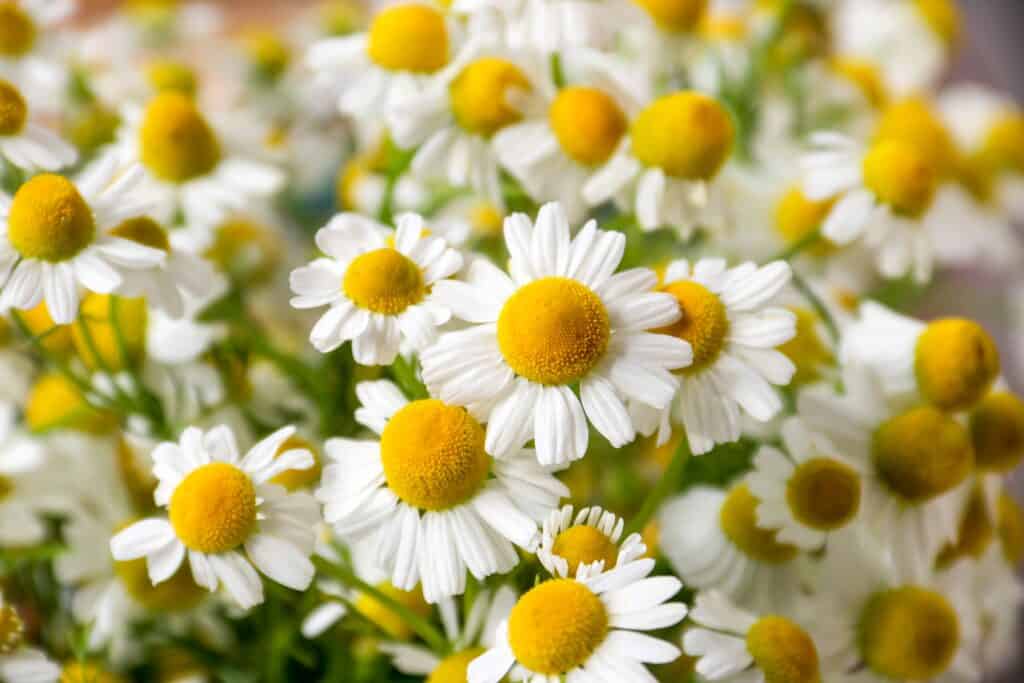
Chamomile can improve the flavor of your broccoli.
©Olesya Myzzz/Shutterstock.com
Planting chamomile as a companion plant is a good source of improving the flavor of your broccoli. Chamomile naturally ejects chemicals that help improve the flavor of Brassica genus plants. Just plant the chamomile seeds 12 to 13 inches apart from your broccoli to provide sufficient space for flowers to bloom.
Chamomile naturally enhances the flavor of broccoli while enchanting the beneficial pests like bees and pollinators in the garden. These insects help with pollination and act as natural pest controllers.
Just imagine the aesthetic pleasure these elegant yellow and white flowers will give your garden!
6. Potato
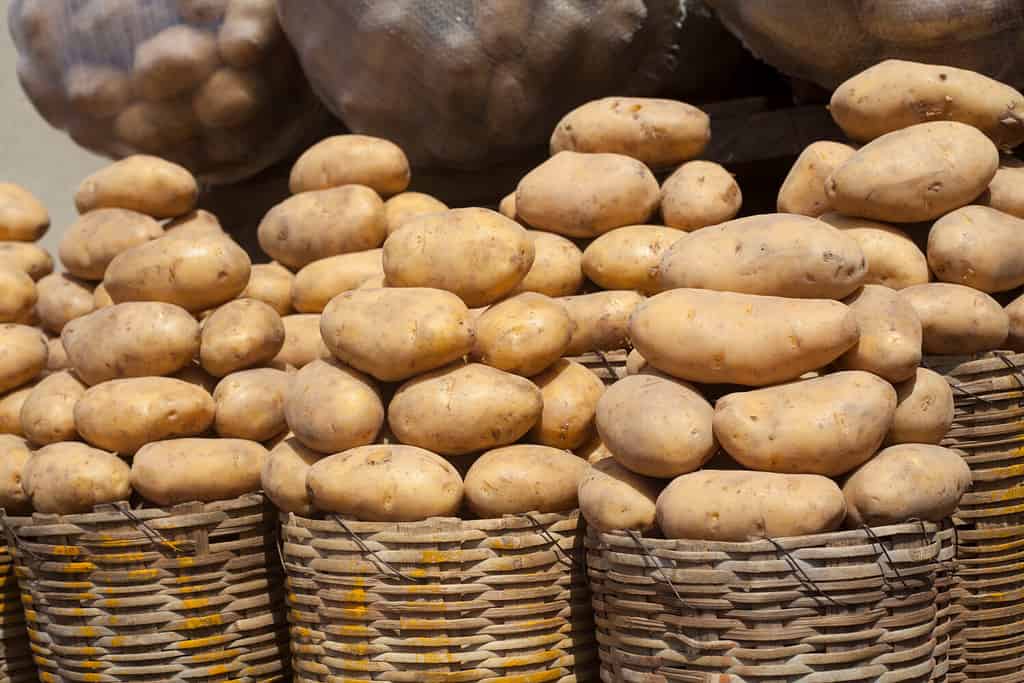
Surprisingly, potatoes make great companion plants for broccoli.
©Tayvay/Shutterstock.com
Potatoes are considered an unfit companion for many plants as they require a lot of soil nutrients for better growth. However, due to different nutrient requirements, you can successfully grow broccoli and potatoes together.
Broccoli grows best in the presence of calcium and nitrogen, while potatoes thirst for magnesium and phosphate. Giving them a good amount of fertilizer can help make these two plants become beneficial companion plants that can grow together.
7. Rhubarb
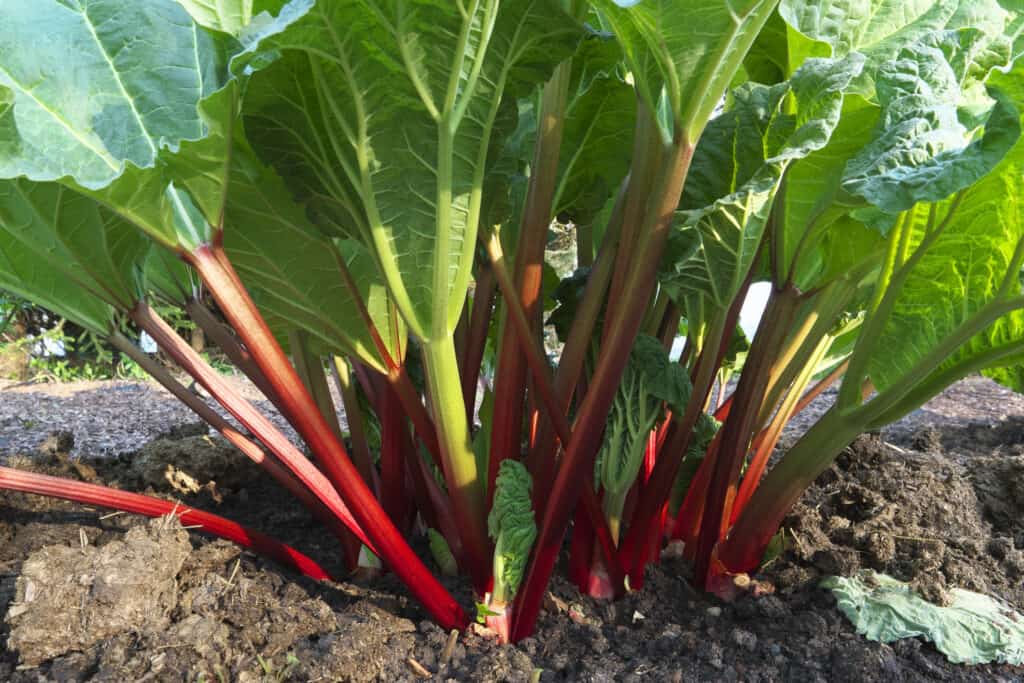
Another broccoli companion plant, rhubarb can repel pests.
©iStock.com/veger
Rhubarb, as a companion plant, successfully dissuade pests like cabbage whitefly, which attach to the surface of the broccoli leaves and destroys the plant. The pungent scent of the rhubarb leaves plays a crucial role in distracting the whiteflies and other plant-eating bugs because they contain highly toxic oxalic acid.
However, make sure to keep a distance of 12 to 13 inches between the two plants.
8. Rosemary

The smell of rosemary repels pests.
©Hulya Poyraz/Shutterstock.com
Planting rosemary next to your broccoli is a great idea, as it’ll aid in keeping annoying pests away from your broccoli. Rosemary repels cabbage moths and cabbage loopers, both of which may gnaw holes through your leaves and crowns and destroy your broccoli.
Rosemary is such an effective pest-repellent that if you remove some stems from the rosemary and place them over your broccoli plants, they may even keep all the snails and slugs far away. However, since rosemary has vastly different soil needs, it’ll probably be best to keep the rosemary in a pot.
9. Spinach
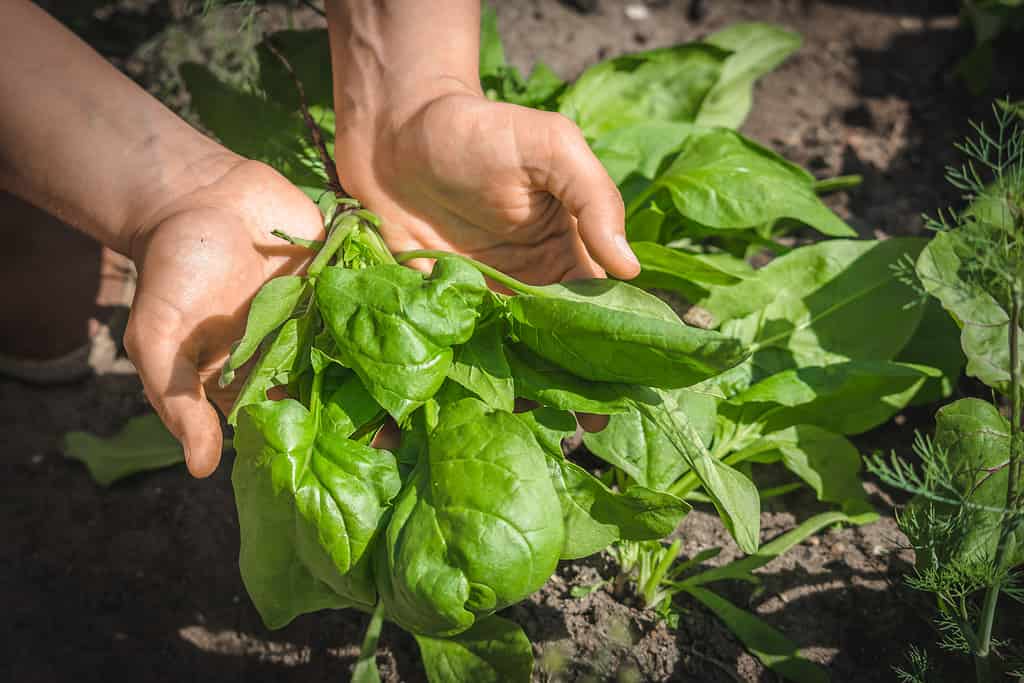
Make sure there is adequate space between the spinach and broccoli.
©alicja neumiler/Shutterstock.com
Spinach is the ultimate green you should grow in your garden and feed to your kids. Growing it near your broccoli is also an excellent idea because it will receive shade thanks to the tall broccoli plant. It will allow the spinach to remain calm, cool, and stress-free, preventing it from bolting fast.
When planting these two plants together, make sure to provide adequate spacing between them, allowing enough room for both to grow and develop their leaves and heads fully. Regularly monitor the soil’s moisture levels, as spinach and broccoli both require consistent watering to thrive. This is a great way to save space in your garden.
10. Radish

Radishes can act as a trap crop.
©Andrii Zastrozhnov/Shutterstock.com
When you plant radishes with broccoli, the radish can act as a trap crop for flea beetles. So, if you’re looking for an organic solution to flea beetles, look no further!
As a plus, companion planting radishes helps you to maximize space in your garden. Root crops, like radishes, grow well with broccoli since they take up different spaces in the soil and have different nutrient requirements as well.
11. Celery
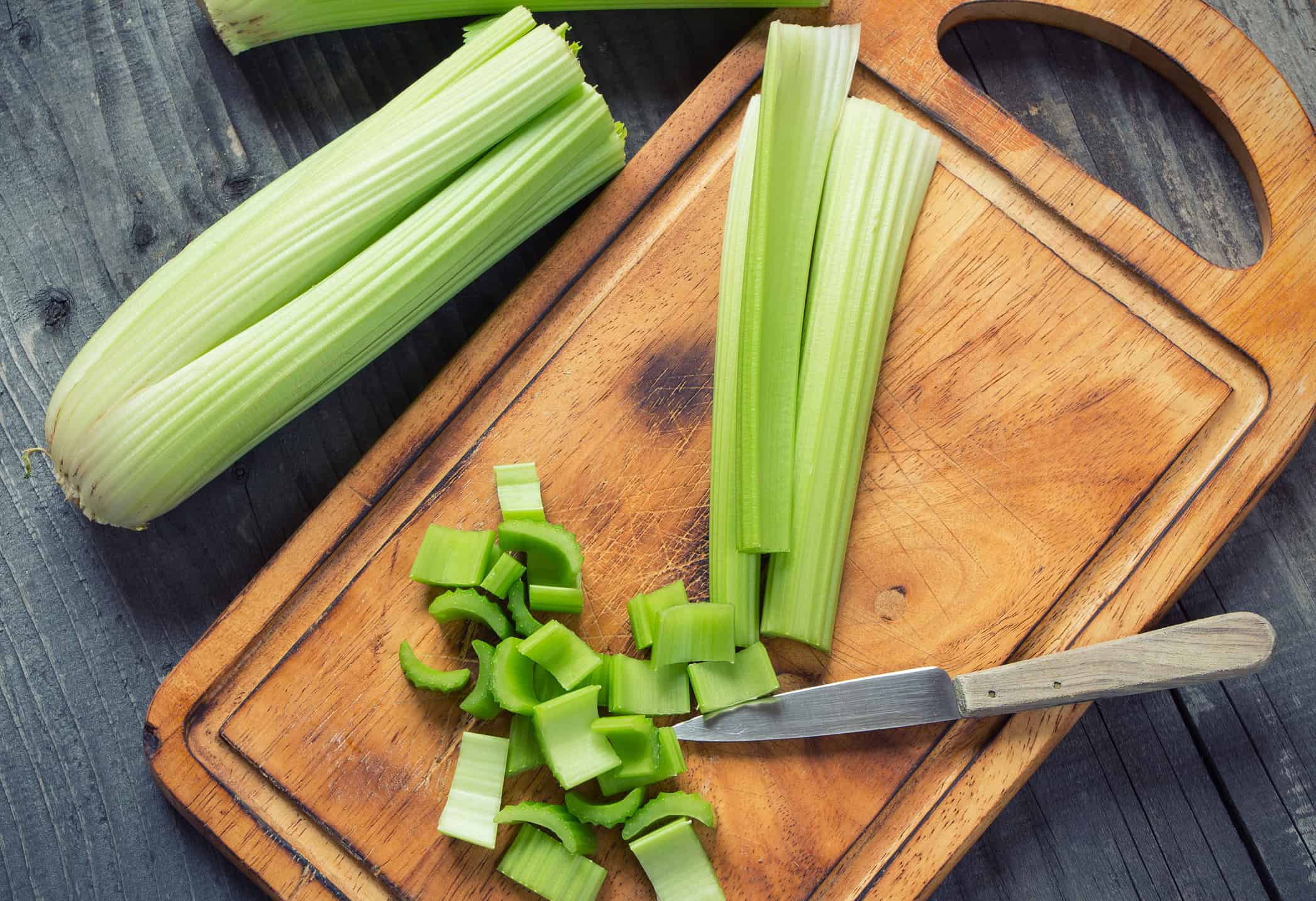
A great broccoli companion plant, celery can make your broccoli taste better.
©iStock.com/Lecic
Celery is fantastic for growing close to your broccoli. In fact, one of the main advantages is that it can make your broccoli taste much better and less bitter.
This plant will also keep the cabbage worms away, as its smell works as a natural pesticide. Meanwhile, your broccoli plant will provide shade to keep the temperature cool for celery to mature effectively. Plus, celery and broccoli have similar growing needs.
12. Mint
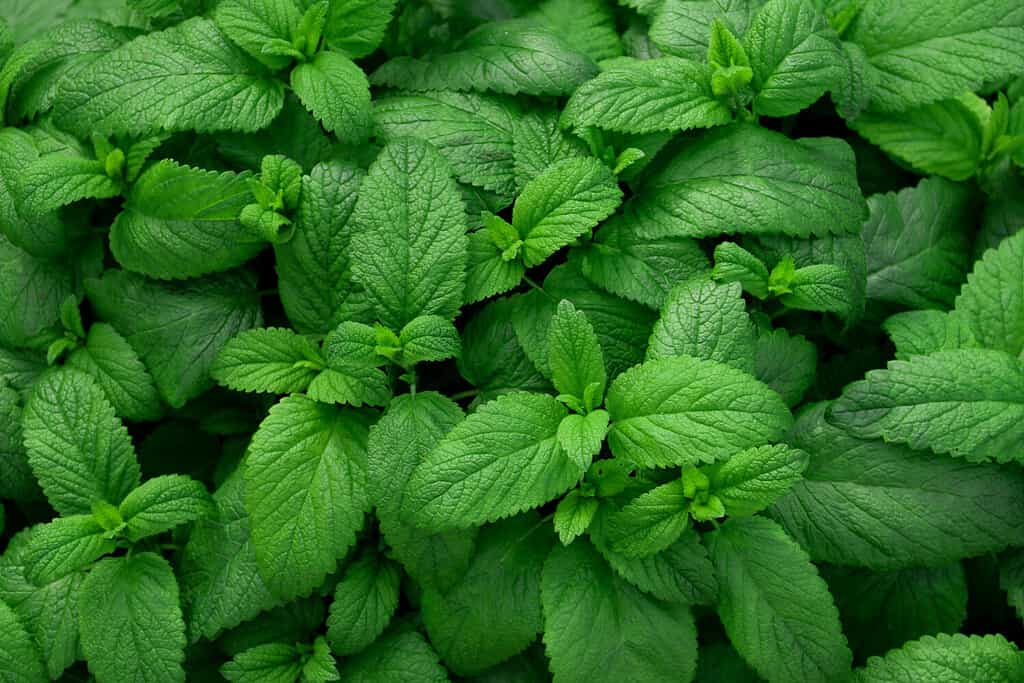
Mint can repel pests and enhance the flavor of your broccoli.
©Olesya Myzzz/Shutterstock.com
Scented herbs are fascinating and add aroma to our food, but it is not a favorite among pests like whiteflies, flea beetles, and aphids. Grow mint close to your broccoli and repel these annoying pests from destroying your broccoli plant! What’s more, the mint will enhance the flavor of your broccoli.
Remember that mint requires proper sunlight to grow in large numbers, so keeping it in the shade of tall broccoli leaves may inhibit its growth. Therefore, proper spacing is essential.
13. Marigold

Marigold attracts beneficial pollinators.
©FunFamilyRu/Shutterstock.com
Flowering plants are considered good companion plants for broccoli. Marigold is one such plant that acts as a natural pesticide and can protect your broccoli plants from whiteflies, aphids, cabbage moths, and flea beetles.
Furthermore, these beautiful flowers attract beneficial pollinators such as bees and butterflies. These pollinators help ensure that your broccoli plants receive adequate pollination, leading to better yields and healthier plants.
14. Geranium
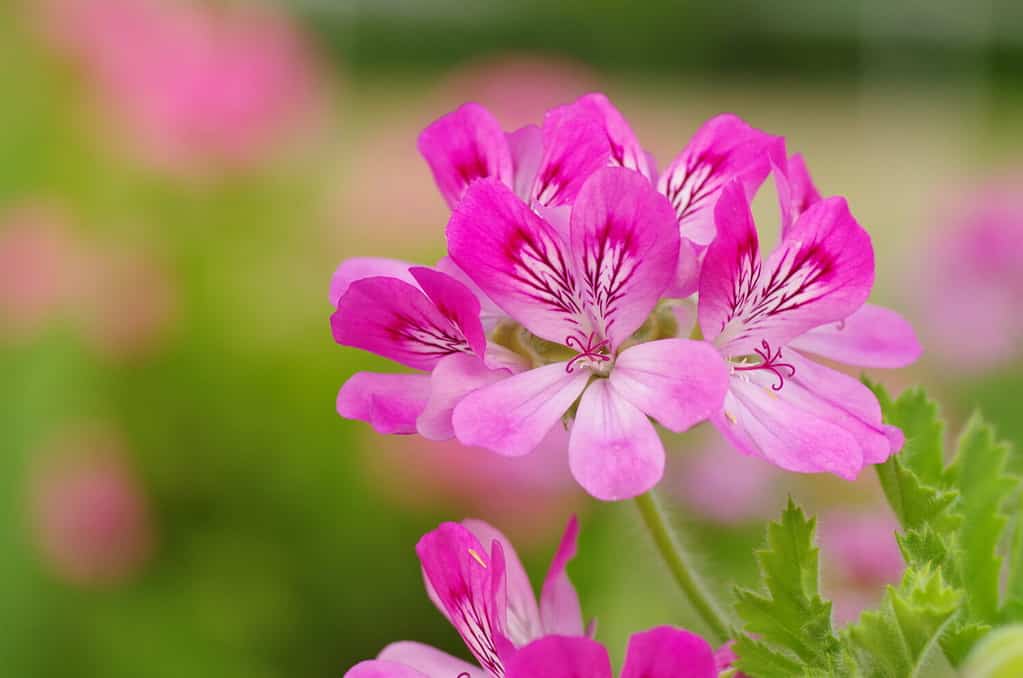
Geranium is another great broccoli companion plant.
©mutsu7211/Shutterstock.com
Growing geraniums as a companion plant for broccoli can help deter different pests like spider mites and cabbage worms from your broccoli. Furthermore, they won’t compete for nutrients your broccoli desperately needs, so planting these two plants together can be beneficial. Plus, you can’t deny the magnificence it gives to your garden.
Plants to Avoid as Companions for Broccoli
Just as there are plants that you can plant with your broccoli, there are plants that you should absolutely avoid planting as companions for your broccoli plant.
1. Brassicas
As two poles on a magnet repel each other, planting other brassicas like cabbage, cauliflower, and kale near your broccoli has the same effect. It will be considered as an invitation to a party for pests to infest your garden.
Furthermore, nutrient competition is also a significant drawback of planting the same genus together. Your broccoli and other brassica plants will compete for the same nutrients, and the soil will not be able to provide enough nutrients for both.
2. Beans
Beans can provide the soil with extra nitrogen. Although nitrogen is essential for the growth of broccoli, lima, pole, and bush beans provide too many nutrients to the soil. The soil will become too rich for your broccoli, hindering its growth and increasing the risk of fungal infections like powdery mildew.
3. Corn
Another bad companion plant for broccoli is corn. If you grow it next to your broccoli, the two plants will compete with each other for essential nutrients like nitrogen. The corn will fulfill its thirst by taking all the nitrogen from the soil, leaving your broccoli hungry.
Plus, the corn plant is also very tall, meaning your broccoli plant may not be able to receive ample sunlight to aid its growth.
4. Strawberries
Another thirsty plant for nutrients, strawberries may remove all the nutrients from the soil, leaving your broccoli vulnerable and stunting its growth.
Another major problem in planting strawberries near your broccoli is that they attract pests!
5. Tomatoes
The members of the nightshade family, such as tomatoes, peppers, and eggplant, are not suitable as companion plants to broccoli. The reason for this is that they are heavy feeders and will compete for nutrients with broccoli. Tomatoes, in particular, are nutrient hungry.
To avoid deficiency and to ensure proper growth, plant tomato and broccoli plants apart from each other.
6. Carrots
Another plant you should absolutely avoid planting near broccoli is carrot. Broccoli and carrots both require calcium to grow, so they will compete for the nutrients in the soil, making them unsuitable companions.
Summary of the Best Broccoli Companion Plants
| Plant | Benefits to Broccoli Plant | |
|---|---|---|
| 1. | Onion | Natural pest repellent against aphids, cabbage worms, and slugs |
| 2. | Beet | Has lower calcium needs, so less competition |
| 3. | Dill | Attract pollinators and repel pests |
| 4. | Lettuce | Same water requirements and deters weed growth |
| 5. | Chamomile | Improves flavor, attracts pollinators, and enhances garden aesthetics |
| 6. | Potato | Different nutrient requirements complement each other’s growth |
| 7. | Rhubarb | Deters pests and releases toxic chemicals |
| 8. | Rosemary | Repel pests like cabbage moths and cabbage loopers |
| 9. | Spinach | Space-saving |
| 10. | Radish | Space-saving and deters flea beetles |
| 11. | Celery | Improves flavor and acts as a natural pesticide |
| 12. | Mint | Repels pests and enhances flavor |
| 13. | Marigold | Repels pests and attracts pollinators |
| 14. | Geranium | Deters pests and adds to the garden’s beauty |
The photo featured at the top of this post is © Valery121283/Shutterstock.com
Thank you for reading! Have some feedback for us? Contact the AZ Animals editorial team.







